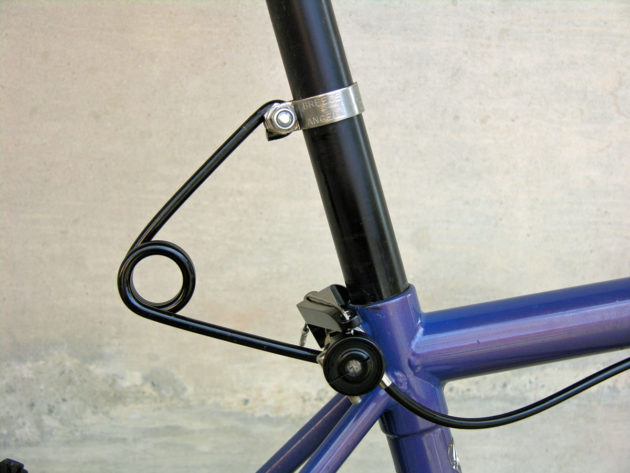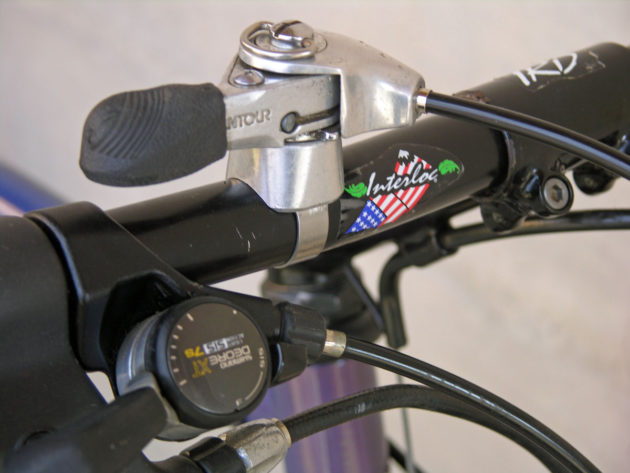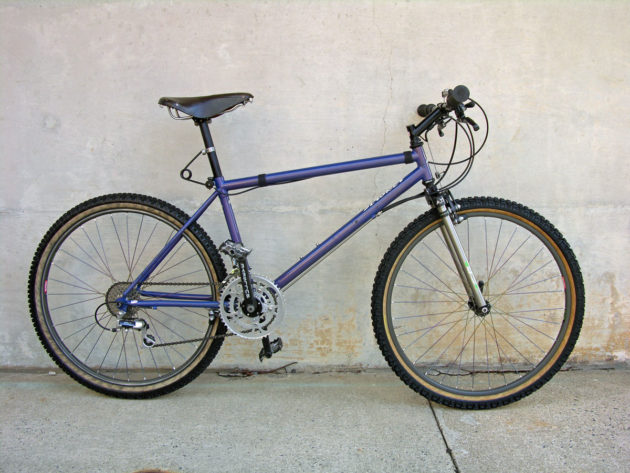A brief history of the dropper seatpost
Originally posted on April 4, 2018 at 1:03 amIn the early days of mountain biking, quick-release seatpost binders were on the bikes even when the wheels were nutted. The trails in those days were usually pretty primitive and bore little semblance to the IMBA-spec’d trails being built today. Many steep descents required the saddle to be lowered out of the way so you could sit on the rear tire. After the descent, it was time to hop off the bike to raise the saddle. Inevitably, you noticed it was crooked 10 feet down the trail, which required yet another stop.

Enter the Breeze and Angell Hite Rite. This simple hairpin-type spring attached to the seatpost via a clamp, while the other end attached to the quick-release binder bolt. Lowering the saddle was as simple as flipping open the quick-release, weighting the saddle to lower it and then closing the quick release. To raise the saddle, riders opened the quick-release, unweighted the saddle to allow the spring to raise the seatpost and closed the quick-release. The Hite Rite also kept the seat centered. For a brief period, the Hite Rite was the best-selling mountain bike accessory. As riders started tackling challenging terrain, even taking your hand of the bar to operate the quick-release became dangerous.

Enter the IRD Remote Quick Release, this cam-type mechanism replaced the quick-release. It was activated using a handlebar-mounted thumb shifter. Used in conjunction with the Hite Rite, this allowed the seat to be raised and lowered while keeping both hands on the bars. By the early 1990s, the Hite Rite had fallen out of favor. The idea would be resurrected 20 years later by a rider in search of a better solution.

That rider was Wayne Sicz, founder of Gravity Dropper. In 2002 Sicz began experimenting with lowering his saddle for some of the steep descents on his Montana trails. Sicz’s strong suit was descending, but he thought he could ride faster if he had the ability to drop his saddle while racing. Sicz purchased an old Hite Rite from eBay. He immediately saw the benefits, but it wasn’t the solution he was looking for. “I got pretty fast at operating the Hite Rite, but it still cost me a pedal stroke when I wanted to actuate it,” says Sicz.
His next step? Sicz called Rockshox. “I told the person on the phone that I had a great idea and wondered if they would be interested. He told me that they were not interested if it didn’t revolutionize suspension. I said that I didn’t think you could say it would ‘revolutionize suspension,’ so he told me that they were not interested and hung up.”

Not one to be easily discouraged, Sics took matters into his own hands. He purchased a CNC machine, and by Interbike 2000, Sicz had two models ready for market: the Descender, a dropper post sans remote, and the Gravity Dropper Classic.
A few short years ago, most riders would have found it hard to fathom spending upwards of $250 on a seatpost. But the times have changed, and many who try a dropper post immediately see how it can improve their riding.
“It has been awesome to see how the industry has grown. I still don’t believe we revolutionized suspension, but we often hear from customers that it’s the best thing since clipless pedals and suspension,” Sicz says.

[Editor’s note: This story – written by Jeff Archer, Josh Patterson and Justin Steiner – first appeared in Dirt Rag magazine issue #161, published February 15, 2012. Photos by Jeff Archer.]